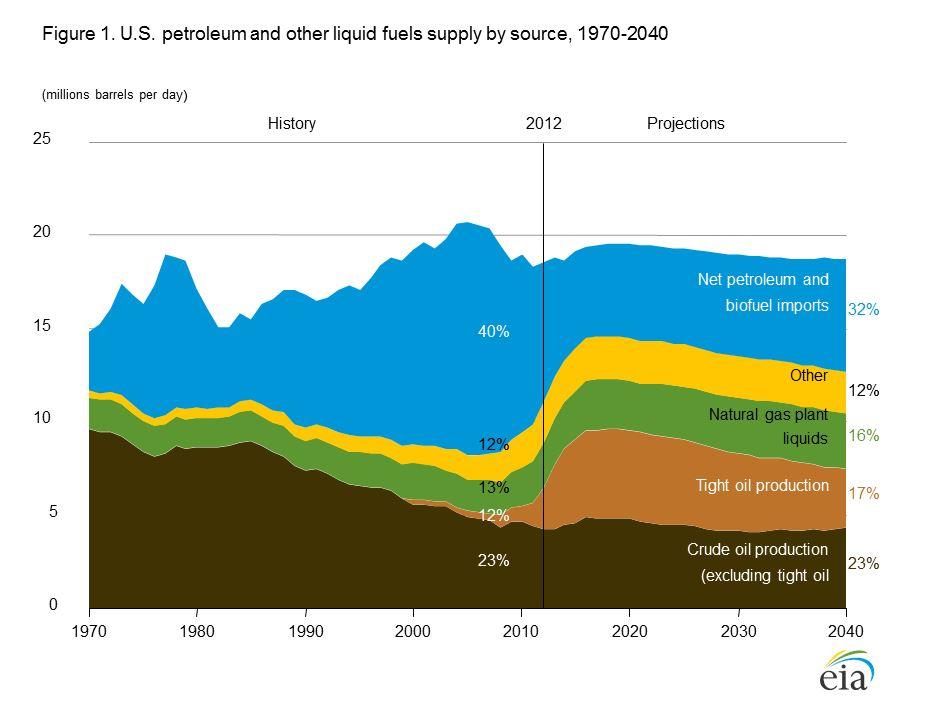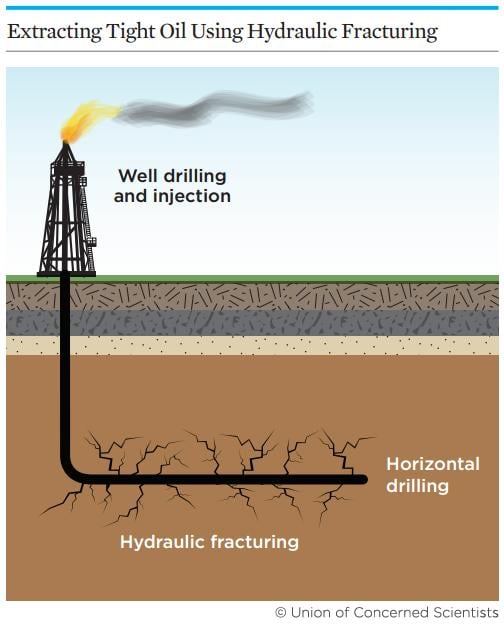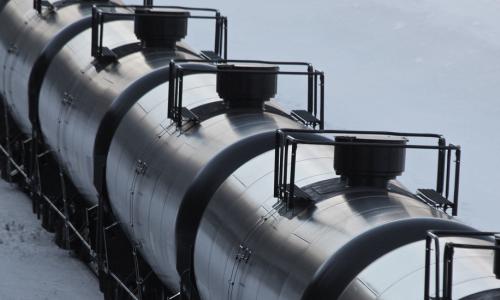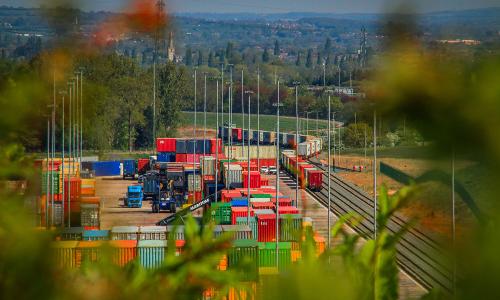Tight oil is a type of oil found in impermeable shale and limestone rock deposits. Also known as “shale oil,” tight oil is processed into gasoline, diesel, and jet fuels—just like conventional oil—but is extracted using hydraulic fracturing, or “fracking.”
Relative to conventional sources, shale oil typically produces more pollution to extract, though the extent depends on whether or not the operators avoid wasteful and unnecessary emissions.
As demand for oil outstrips conventional oil supplies, a growing share of oil is coming from tight oil resources, especially in the United States. Shale deposits in North Dakota, New York, Texas, and elsewhere have helped increase US tight oil production from 23 percent of domestic oil production in 2011 to 45 percent in 2013.

Environmental impacts of tight oil
Natural gas is found in the same rock formations as tight oil and is produced as oil is fracked. The technology to collect and market the natural gas is available, but rather than installing the necessary infrastructure, operators often burn excess gas at the well site, selling just the liquid fossil fuels. Known as flaring, this process substantially increases the global warming emissions associated with shale oil (flaring is so extensive in some areas that North Dakota’s flaring sites can be seen from space). Fugitive methane emissions—which occur when natural gas is leaked or vented—are another avoidable climate change contributor.

Even more emissions are produced by fracking, which requires significantly more energy than conventional drilling techniques. Many of these emissions can be avoided with better infrastructure and cleaner extraction technologies.
Other impacts of tight oil include potentially significant water, air, and noise pollution around drilling sites, and the risk of oil spills by the trucks, trains, and pipes that transport extracted shale oil to refineries.
The solution: Half the Oil
Using less oil—and transitioning to cleaner transportation technologies—would help decrease the need for unconventional energy sources like tight oil or tar sands. More efficient cars and trucks and clean fuel alternatives can cut our oil use, with huge benefits for drivers, the economy, and the country.
As others make progress toward a cleaner transportation system, oil companies should ensure that the oil we do use doesn't get worse. Avoiding unnecessary flaring, reducing fugitive emissions, and avoiding the dirtiest sources altogether would help minimize shale oil’s emissions.




